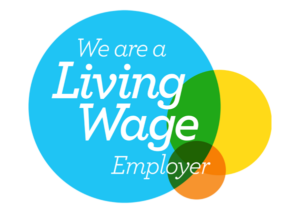Matt Hornblower
matt.hornblower@nuttall.co.uk - - November 22 2021.
The worst of the pandemic may be over. But with cases continuing to rise in some locations and with long-term impacts on shopper behaviour and personal preference still to be played out, we take a close look at the considerations that are likely to be on the minds of retailers whist designing and planning their store formats of the future.
Customer experience or CEX has long been a driver for retail space, fittings and fixtures. But as we look ahead, SafeX – or designing for customer and colleague H&S – is set to become a permanent priority.
Whilst we broadly have the green light to return to in-person interactions with minimal restriction, plenty of customers will continue to be anxious about people-proximity and hygiene as they go about their daily business.
Here at Nuttall, we see transformed customer behaviour (and consequently retailer response) falling broadly into two camps.
ONE – Customers who want to see interaction minimised are valuing speed and efficiency above all else. This consumer group poses retailers a substantial challenge in terms of delivering service, creating shopping ‘magic’ and designing high performing processes to get product off shelves and into buyers’ hands.
For this customer segment, retailers are looking at fundamental process redesign and digital enablement. Taking in ‘Buy on-line, pick up in store’ (Globally known as BOPIS, but more familiar in the UK as click and collect) as well as curb-side and drive through models; post-pandemic, digitally equipped retailers will be considering what formats can best supplement home delivery as routes to achieve 5-star customer satisfaction.
Additionally, any-instore experience for these customers is likely to be geared towards genuinely contactless shopping – which goes beyond the need for touch-free payment mechanisms, to include hands-off browsing as well. As a result, we’re expecting an increased emphasis on retail theatre, product demos and digital touch screens in the months ahead. Simply imagine the model popularised by Argos and cast forward in time, adding in various experiential enhancements. The incentive for this kind of instore re-imagineering is massive, as it has the potential to reduce dependency on expensive shopping real estate and leverages the power of omnichannel.
TWO – Customers who want to return to revel in their in-store experience, now have the expectation that retailers and brand owners will design with more thought around physical space to maximise pleasure whilst minimising person-to-person contact.
For this set of customers, physical store design and presentation considerations are paramount.
Planning for distance, hygiene and cleanliness with touch free browsing and contactless checkout and payment are literally becoming hygiene factors for these consumers. Consequently, forward-thinking retailers are looking to put shoppers in control via well planned, managed and executed in-store experiences.
For retailers hoping to delight these types of consumers, there are plenty of additional options to consider:
- A requirement for sanitised surfaces and products elevates the need for flawless and stringent cleaning protocols. Plus, retailers may be reconsidering their materials choices for high-contact fittings and fixtures, such as copper door handles and counters and other anti-bac substrates for carpets or fitting rooms.
- Space planning for physical distancing is likely to mean less space for actual product in store, requiring retailers to respond with clever display formats to maximise facings, as well as shelf caps to ensure stock availability and minimise unnecessary staff footfall through the store. Reconfiguring space and systems to facilitate optimised restocking and e-fulfilment are all factors at play.
- Simplification and store design in clear straight lines is a potential win, but we don’t want conveyor-belt shopping experiences. So retailers need to think carefully about customer journey and dwell time; about navigation, signposting and ultimately managing congestion. Despite IKEA having bottomed out the ‘one way’ system years ago, this format hasn’t really gained traction elsewhere. But watch this space.
- Screens, barriers and queue management are likely to be defining characteristics for our in-store experiences for the foreseeable future. As such, we’re seeing our clients revisiting their immediate Covid response measures with systematically refreshed solutions for enhanced durability that deliver on aesthetics as well as compliance.
- Designating in-store areas for functions such as returns or for click and collect are also great ways of reducing congestion (and keeping our first customer group happy). We anticipate retailers going further, faster to carve up space in ways that align to specific shopper journeys.
In short, retailers are currently busy figuring out what is at the core of their SafeX strategies – and getting clear on the non-negotiable factors that lean into the needs of specific customer segments. However retailers approach the challenge, keeping consumers and employees in a good place on Health and Safety, then planning CEX for customer delight on-top of this baseline requirement is where the smart money will be spent in 2022. Naturally, we’ll keep you posted as things continue to develop and evolve.

















